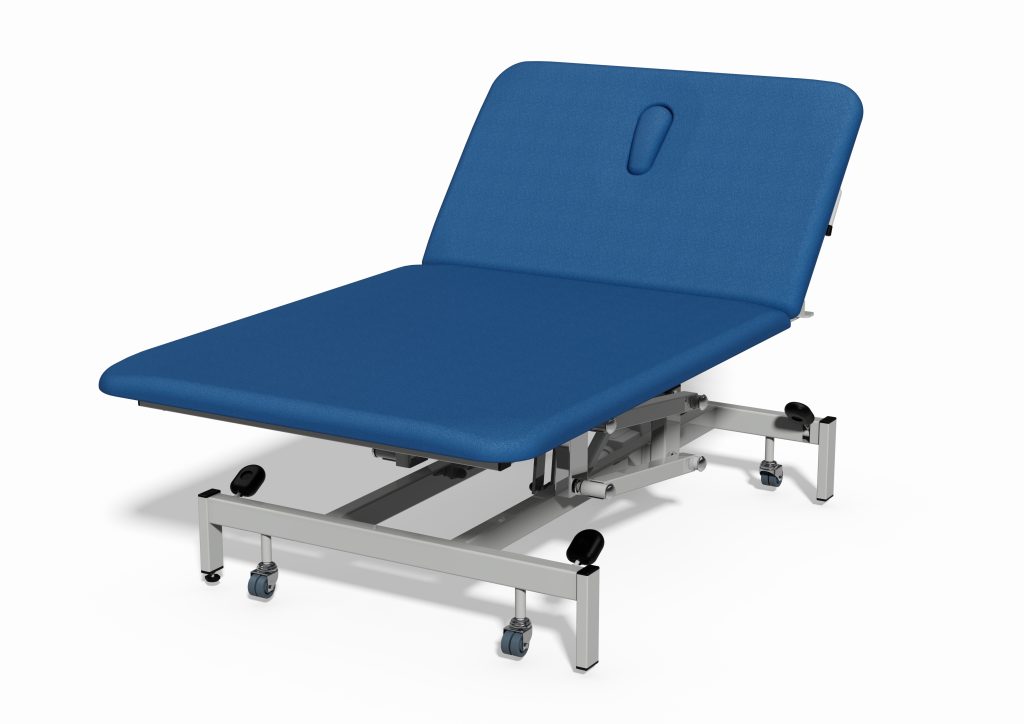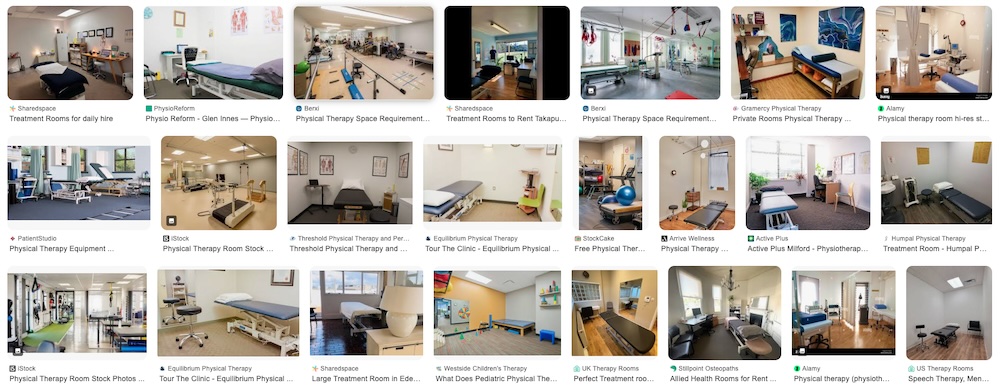61 Why does a physiotherapy clinic bed look like this?
Part 1
Back in 2012 I wrote an article titled Foucault and Physiotherapy and in that article I asked why physiotherapy treatment beds look the way they do.
Like this I mean:

Obviously there are ergonomic considerations. The bed needs to go up and down to be at a good working height for the therapist. It has to be a good width for the patient. And the segments mean you can adjust the patient’s position for certain manoeuvres.
It’s essential that the surface can be wiped down, and the wheels help too.
But why does it need to have all of the machinery exposed? Why does it have to look so cold and ‘clinical’?
Question 1: Take a close look at the different kinds of treatment beds you use each day. How, if at all, do they differ?
Question 2: What term do you use to refer to this piece of equipment? Is it a bed, a plinth, a couch, a table, or something else? What mental association do you make to all of those terms?
Part 2
If you do an image search for the term ‘treatment room’ on Google or some other search engine you will see images like this:

Now repeat your search, but this time search for “physical therapy treatment room”.
You’ll come up with images like this:

Notice how much colder and more clinical these spaces are. With a few exceptions, there’s little or no concession to comfort or luxury, no suggestion that this is going to be a pleasurable experience. This is going to be work: practical, functional, purposeful.
So, based on what you know of Foucault (and perhaps what you might have read in the book The end of physiotherapy), why do you think physio treatment beds and clinic rooms look like this?
Part 3
Bearing in mind that Foucault believed everything we do reveals deeper discourses shaping our subjectivity (what psychologists call ‘identity’) and that nothing is accidental about the way physio treatment rooms are designed, what does your treatment space say about the message you want to convey to your clients/patients about your professional identity and practice?
Reference
Nicholls, D.A. (2017). The end of physiotherapy. Routledge.
Nicholls, D.A. (2012). Foucault and Physiotherapy. Physiotherapy Theory and Practice, 28(6), 447-453.

